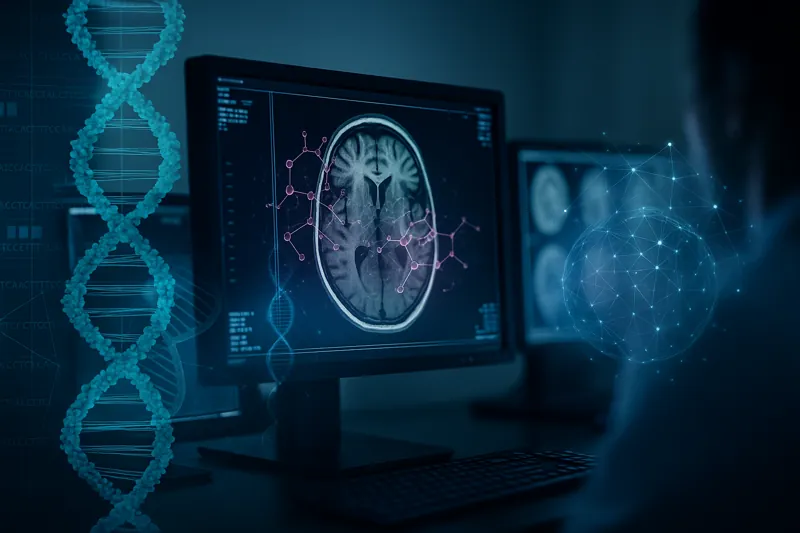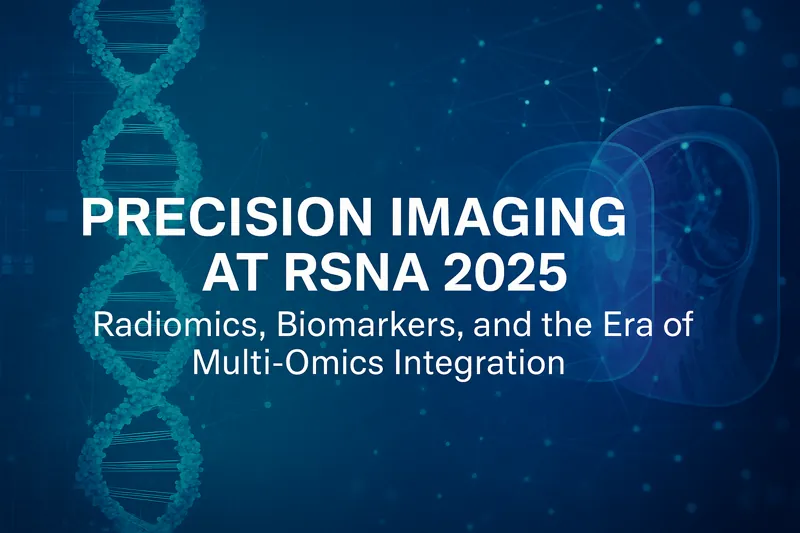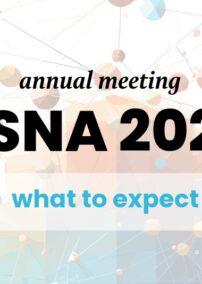As radiology moves deeper into the era of precision medicine, quantitative imaging is transforming from a promising research tool to a clinical driver of individualized care. The convergence of radiomics, imaging biomarkers, and multi-omics integration represents one of the most exciting frontiers showcased under RSNA 2025’s theme, “Imaging the Individual.”
Radiomics — the extraction of high-dimensional quantitative features from medical images — allows the characterization of tissue heterogeneity beyond what can be perceived visually. These features, derived from modalities such as CT, MRI, or PET, have been linked to tumor phenotype, gene expression, and therapeutic response across oncology, neurology, and cardiology studies (Springer, 2024).
Imaging Biomarkers in Practice
Validated imaging biomarkers are redefining how clinicians stratify patients, monitor disease, and predict outcomes. Quantitative features from radiomics pipelines can act as noninvasive surrogates for histopathologic or molecular data, guiding therapy selection and prognosis assessment. For instance, radiomic signatures have shown potential in predicting response to immunotherapy and correlating with tumor-infiltrating lymphocytes in non-small cell lung cancer (ScienceDirect, 2020).
In cardiovascular and neuroimaging applications, biomarkers derived from texture and perfusion patterns are being explored to detect subclinical disease, assess ischemic risk, and evaluate treatment efficacy. The promise lies in moving from population averages toward individualized predictions based on each patient’s unique imaging phenotype.
Radiogenomics and Multi-Omics Integration
The next step in precision imaging is radiogenomics — linking imaging phenotypes with genomic and proteomic data to uncover biologically meaningful correlations. Integrating imaging with multi-omics datasets enables the creation of comprehensive disease models that reflect both spatial and molecular dimensions.
Recent reviews highlight the potential of AI-driven multi-omics integration to refine cancer subtyping, prognostication, and therapeutic decision-making (British Journal of Radiology, 2025) and (ScienceDirect, 2025). Federated approaches and multi-modal AI models are emerging to harmonize these heterogeneous datasets while preserving privacy and reproducibility.
Projects such as NAVIGATOR, a regional imaging biobank integrating multimodal imaging with molecular and clinical data, illustrate how research infrastructure is catching up to these ambitions (European Journal of Radiology, 2025).
 From Quantitative Imaging to Clinical Translation
From Quantitative Imaging to Clinical Translation
Despite the promise, clinical translation remains the critical frontier. Feature reproducibility, acquisition standardization, and regulatory validation continue to challenge adoption (Insights into Imaging, 2020). However, the increasing presence of quantitative imaging biomarkers in prospective trials, along with support from the Quantitative Imaging Biomarkers Alliance (QIBA) and FDA’s digital health framework, signals that this research is crossing the threshold into practice.
At RSNA 2025, expect sessions emphasizing standardization of radiomics workflows, reproducibility metrics, and AI-assisted integration of multi-omics data. Discussions will likely center on how to validate imaging biomarkers in multi-institutional settings and what infrastructure is required for clinical scalability.
The Role of Teleradiology in Precision Imaging
For teleradiology providers like Vesta, these developments offer both opportunity and responsibility. The same digital infrastructure that enables subspecialty coverage across time zones can support quantitative image analysis, data harmonization, and longitudinal tracking — essential foundations for radiomic and biomarker validation.
By aligning with quantitative imaging standards and collaborating with research institutions, teleradiology networks can help bring precision imaging insights into real-world practice — from oncology to cardiovascular disease management.
Precision imaging is not a distant future — it’s the next evolution of radiology happening now.
At RSNA 2025, Vesta will be on site to explore how radiomics, biomarkers, and AI-driven data integration are redefining what it means to truly “image the individual.”



